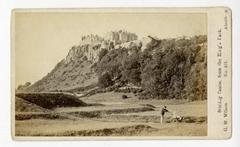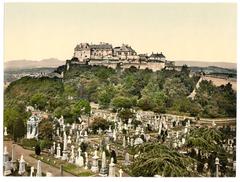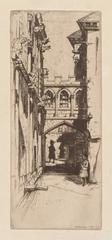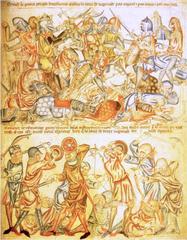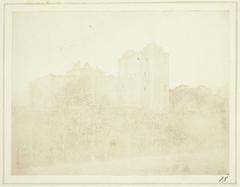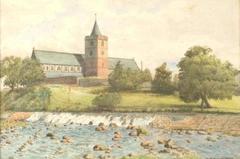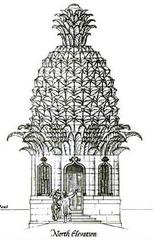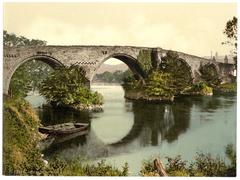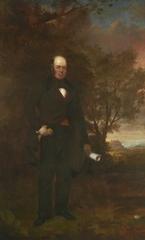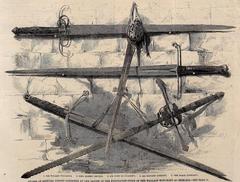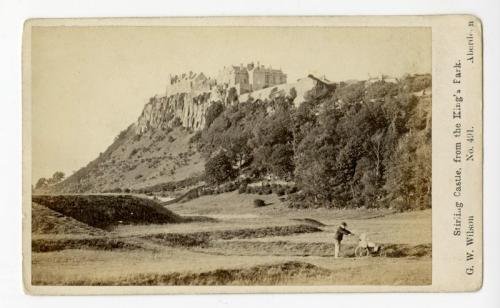
Visiting Castle Esplanade in Stirling: Hours, Tickets, and Tips
Date: 23/07/2024
Introduction
The Castle Esplanade in Stirling, United Kingdom, stands as a testament to Scotland’s rich and varied history. This broad, open space in front of Stirling Castle has been a focal point for historical events spanning from the early medieval period to the present day. As a site of profound historical significance, the esplanade has witnessed military parades, royal ceremonies, and public gatherings, reflecting its enduring importance in Scotland’s cultural and civic life (Historic Environment Scotland). This guide aims to provide a comprehensive overview of the Castle Esplanade, covering its historical significance, visitor information, and travel tips to ensure a memorable visit. From the Battle of Stirling Bridge in 1297 to the coronation of Mary, Queen of Scots in 1543, the esplanade offers a unique glimpse into Scotland’s past and present (National Trust for Scotland). Whether you’re a history enthusiast or a curious traveler, this guide will equip you with all the necessary information to explore this remarkable site.
Table of Contents
- Introduction
- Historical Overview
- Visiting Information
- Travel Tips
- Nearby Attractions
- Events and Activities
- Architectural and Archaeological Insights
- Cultural and Historical Significance
- Visitor Experience
- Preservation and Conservation
- FAQ Section
- Conclusion
Exploring the Rich History and Visitor Info of Castle Esplanade in Stirling
Historical Overview
Early Beginnings
The history of the Castle Esplanade dates back to the early medieval period. Originally a defensive feature, it provided a clear field of fire for the castle’s defenders and served as a mustering ground for troops. Stirling Castle, perched atop Castle Hill, has been a strategic military site since at least the 12th century.
Medieval Significance
During the medieval period, the esplanade was integral to the defense and administration of the castle. It was used for military parades, training exercises, and as a gathering point for soldiers before battle. The Battle of Stirling Bridge in 1297, where William Wallace achieved a significant victory against the English, took place nearby, underscoring the area’s military importance (Historic Environment Scotland).
Renaissance and Royal Connections
In the 16th century, under the reign of James IV and James V, the esplanade was transformed into a more formal space. It hosted grand ceremonies, including the coronation of Mary, Queen of Scots, in 1543. The design during this period included ornamental gardens and pathways, reflecting Renaissance ideals of beauty and order (National Trust for Scotland).
Military Use in the 18th and 19th Centuries
The 18th and 19th centuries saw the esplanade continue to serve military purposes. During the Jacobite Risings, it was a key stronghold for government forces. The esplanade was used for drilling troops and as a staging area for military operations. The castle and its esplanade were fortified to prevent further uprisings after the 1746 Battle of Culloden (Historic Environment Scotland).
20th Century to Present
In the 20th century, the Castle Esplanade transitioned from a military site to a public space. Following World War I, it was used for commemorative events, including Remembrance Day ceremonies. Today, the esplanade hosts a variety of activities, from military parades to music festivals, reflecting its enduring significance (Visit Scotland).
Visiting Information
Tickets and Visiting Hours
The Castle Esplanade is open to the public year-round. Visiting hours typically align with those of Stirling Castle. It is advisable to check the official Stirling Castle website for the most up-to-date information on tickets and visiting hours.
Accessibility
The esplanade is accessible to visitors with mobility issues, though some areas may have uneven terrain. Accessible pathways and facilities are available to ensure a comfortable visit for all.
Travel Tips
When visiting the Castle Esplanade, it’s recommended to wear comfortable footwear due to the expansive open space and potential uneven ground. Bringing a camera is a must to capture the stunning views of the surrounding landscape, including the River Forth and the Ochil Hills.
Nearby Attractions
Stirling offers a wealth of historical sites and attractions. Don’t miss the opportunity to visit the Wallace Monument, the Battle of Bannockburn Visitor Centre, and the Church of the Holy Rude. Each site offers additional insights into Scotland’s rich history.
Events and Activities
The esplanade hosts a variety of events throughout the year, from historical reenactments to cultural festivals. Check the official Stirling Castle website or local tourism boards for event schedules and ticket information.
Architectural and Archaeological Insights
Excavations have revealed remnants of medieval fortifications and Renaissance-era gardens, offering a glimpse into the esplanade’s past configurations. The esplanade’s current layout reflects its historical role as both a defensive feature and a ceremonial ground (Canmore).
Cultural and Historical Significance
The esplanade has been a witness to pivotal events in Scottish history, from medieval battles to royal ceremonies. Its transformation into a public space in the 20th century highlights its adaptability and enduring relevance. The historical layers, from medieval fortifications to Renaissance gardens, offer a tangible connection to Scotland’s past (Historic Environment Scotland).
Visitor Experience
Visitors can explore the esplanade’s rich history through guided tours and interpretive displays. The open space is used for various events, allowing visitors to experience its historical significance dynamically (Visit Scotland).
Preservation and Conservation
Efforts to preserve and conserve the esplanade are ongoing. Conservation projects focus on maintaining structural integrity, preserving archaeological findings, and enhancing visitor access and interpretation (Historic Environment Scotland).
FAQ Section
Q: What are the visiting hours for Castle Esplanade?
A: Visiting hours typically align with those of Stirling Castle. Check the official website for the most accurate information.
Q: How much are tickets to Castle Esplanade?
A: Ticket prices vary. Refer to the Stirling Castle website for detailed pricing information.
Conclusion
The Castle Esplanade in Stirling is a site of profound historical significance, reflecting Scotland’s rich heritage from the medieval period to the present day. Its evolution from a military mustering ground to a public space underscores its enduring importance in the cultural and civic life of Stirling. Plan your visit today to explore this remarkable site and its surrounding attractions.
References
- Historic Environment Scotland, n.d., https://www.historicenvironment.scot/
- National Trust for Scotland, n.d., https://www.nts.org.uk/
- Visit Scotland, n.d., https://www.visitscotland.com/
